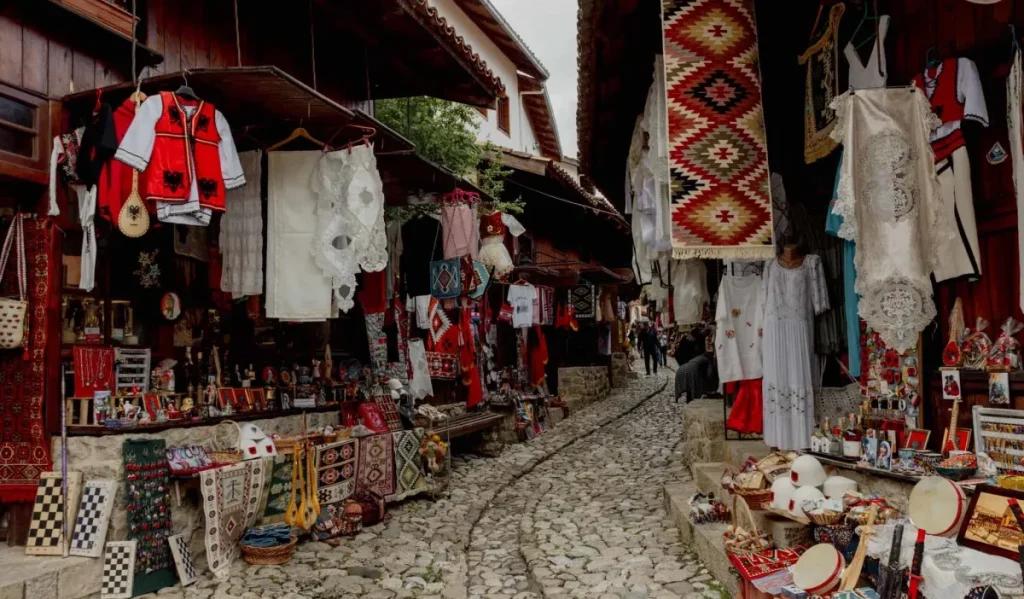Must-Visit Historical Sites in Albania
Albania, this small country represents numerous historic sites that are worth visiting. The country has a rich mixture of sites from the Illyrian, Roman, Byzantine and Ottoman periods—some of which are on the UNESCO World Heritage list. Here is our list of the best historic sites in Albania.
Butrint
Butrint is an archaeological national park in Albania and a UNESCO World Heritage site, renowned for its ancient ruins dating back as far as the 7th century BC Bronze Age.
Butrint’s impressive archaeological structures include a Greek theatre, fortifications, Roman villas and public baths and a Christian basilica. Butrint was abandoned during the Ottoman period when the surrounding area turned to marshland. The classical authors Virgil and Dionysius of Halicarnassus record that Aeneas visited ancient Butrint following the fall of Troy. Approximately 20 kilometres from the modern city of Saranda, Butrint is easily reached by bus.

Apollonia
Not far from Fier, on the road that goes towards the Adriatic Sea, at a distance of about 14 km, there is Apollonia. Apollonia was an ancient city founded by ancient Greek colonists from Corinth and Corfu around 600 BC. Today it is an archaeological site in Albania which covers 137 hectares. It incorporates the ruins of a triumphal arch, a library and several temples. There is a Museum of Archaeology in the old Monastery of Saint Mary which houses artefacts from the site and both the museum. The site contains both French and English translations.

Berat
Located in the Southwest of Albania, Berat is one of the oldest towns in the country. It is also known as the City of a Thousand Windows due to the several windows on the buildings. Berat has been a UNESCO World Heritage site since 2008, recognized not only for its beauty but also as a rare example of religious tolerance. Today the city serves as a testimony to the diversity of societies in the Balkans, of various types of monuments and buildings since the Classical Ottoman period. Some other cultural and historical that you can visit are: the Kala or Berat Castle, the muslim quarter – Mangalem, the Orthodox quarter – Gorica, the modern quarter – Bulevardi, the Cathedral of the Dormition, the Red Mosque, the Church of Saint-Theodore.

Kruja Castle
Krujë Castle is located in the north central Albanian city of Krujë. Krujë castle was built in the 5th or 6th century, perched above the city with the same name as today. The first construction on the site of Krujë Castle likely dates to the early Middle Ages. In the 15th century, Krujë Castle became the centre of Skanderbeg’s rebellion against the Ottomans. During the Battle of Niš (1443), Skanderbeg deserted the Ottomans with 300 loyal Albanians. He captured Krujë Castle and embarked on a 25-year long rebellion against Ottoman rule. Krujë Castle is one of the most visited historical sites in Albania. Additionally, within the castle walls you can find the Skanderbeg Museum alongside the Ethnographic Museum.

Rozafa Castle
Rozafa Castle or Shkodër Castle is a castle near the city of Shkodër.Founded by the Illyrians, rebuilt by the Venitians and the Ottomans. The story goes that Rozafa, the unfortunate woman chosen to be walled-up in the castle for good luck, asked that two holes be left in the stonework so that she could continue to breastfeed her baby. There's a spectacular wall sculpture of her near the entrance to the castle's museum. When exploring the quieter corners of the castle grounds, keep your eyes peeled for one of the many tortoises who have made the castle their home. The castle provides a view over the surroundings and accommodates the museum of the city's history with exhibits from various periods.

Amphitheatre of Durrës
The Amphitheatre of Durrës is a Roman amphitheatre that was built in the 2nd century AD by emperor Trajan, and is the largest amphitheatre ever built in the Balkans. It was destroyed by earthquakes in the 6th and 10th centuries. The amphitheatre of Durrës was discovered in 1966 by the old scientific collaborator Vangjel Toçi, the year in which dozens of expeditions of the research and scientific sectors, Albanian and foreign, were launched.Its main function was hosting gladiator combat and it could have hosted between 10,000 and 20,000 spectators. The Amphitheater of Durrës remains one of the most majestic of the ancient world and one of ten most beautiful Roman amphitheatres.

